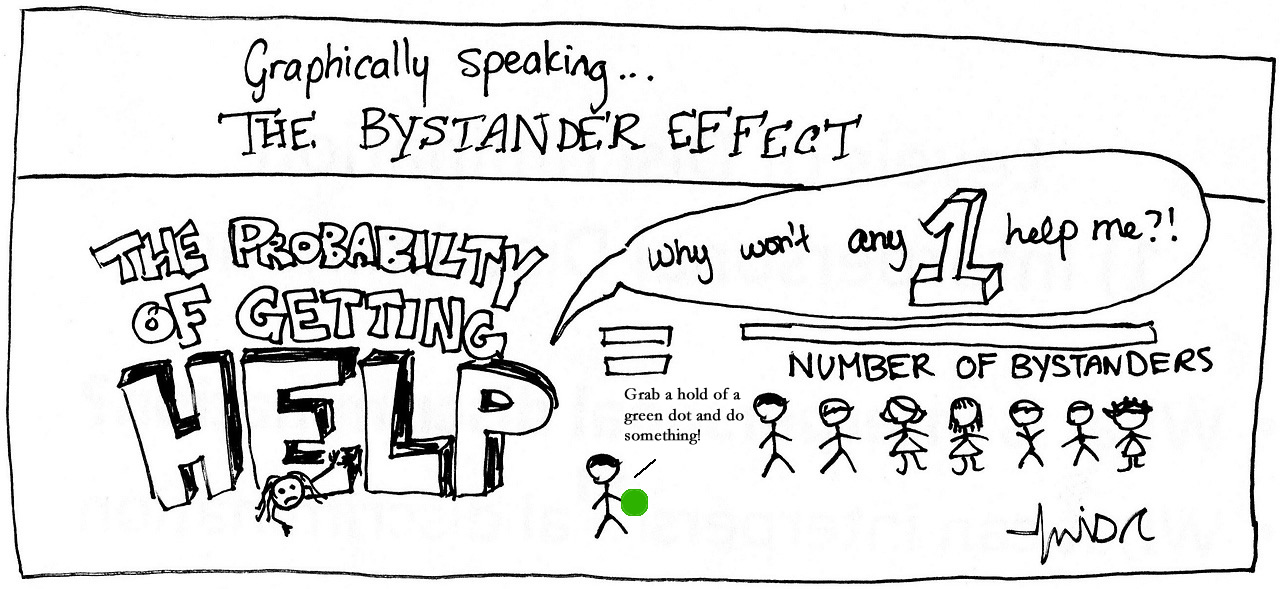 Green Dot week is taking place this week from January 20th-24th and there will be various events including an exciting showcase event featuring debates and spoken word on how to use your green dots as well as a Green Dot Bystander training course to earn CCR credits! Click here for more information on Green Dot Events, and click here for more information on the green dot.
I’ve done a green dot by writing this article, what’s your green dot?
Gloria
Green Dot week is taking place this week from January 20th-24th and there will be various events including an exciting showcase event featuring debates and spoken word on how to use your green dots as well as a Green Dot Bystander training course to earn CCR credits! Click here for more information on Green Dot Events, and click here for more information on the green dot.
I’ve done a green dot by writing this article, what’s your green dot?
Gloria
For me, part of the joy of being a university student is learning about theories or concepts that seem completely irrelevant and distanced from my life—only to unexpectedly run into them down the road.
If you’ve ever taken PSY100, then you’re likely to have heard about the “bystander effect”: a social psychological phenomenon in which bystanders will not offer any assistance to a distressed individual. In fact, the more observers there are in the situation, the less likely the victim will receive help. The common explanation for this effect was “diffusion of responsibility”. This meant that responsibility for the victim could be considered a unit that is split amongst observers. So, the larger the group, the less responsible each individual feels; breeding inaction.
I found it difficult to conceptualize the effect taking place in reality while reading about the two researchers, John Darley and Bibb Latane, who first demonstrated the effect in the laboratory. The phenomenon seemed much too cold-blooded to be human!
I was able to better ground the bystander effect in reality when I read about Kitty Genovese, a woman living in Queens, New York, who was brutally stabbed to death while 38 witnesses watched without intervening or contacting the authorities. In fact, this was the case that sparked Darley and Latanes’ research into the bystander effect.
While Genovese’s murder was horrific, this was still an event taking a place in another city. It seemed far away.
It wasn’t until I read about the “green dot” on campus that I realized that the bystander effect was really more common in everyday life than I thought. It happens every time someone chooses to tolerate someone being harassed by looking away, or being aware of a friend who might be the victim of partner violence and deciding that it’s none of your business. In both situations, that person needs help but we simply watch, frozen in our inaction. We are effectively enabling their victimization.
So what is a green dot anyway? To get a better idea of it, first imagine a red dot. The red dot is a representation of an act of power-based personal violence. It could range from rape, to statements justifying or minimizing violence—and yes, even to inaction in the face of high-risk situation.
The green dot is the antithesis of the red dot: it symbolizes any behavior or attitude that promotes safety by communicating complete intolerance for violence of any form. This includes striking up conversation about violence prevention with a friend, and getting a friend out of a high risk situation.
These dots are part of a campaign under the Green Dot tri-campus initiative that aims to engage the UofT community as active bystanders to prevent power-based personal violence. The goal is to displace and outshine the red dots on campus with green dots together as a student body. Be part of the initiative and choose to be a green dot to beat the bystander effect for a safer campus!
 Green Dot week is taking place this week from January 20th-24th and there will be various events including an exciting showcase event featuring debates and spoken word on how to use your green dots as well as a Green Dot Bystander training course to earn CCR credits! Click here for more information on Green Dot Events, and click here for more information on the green dot.
I’ve done a green dot by writing this article, what’s your green dot?
Gloria
Green Dot week is taking place this week from January 20th-24th and there will be various events including an exciting showcase event featuring debates and spoken word on how to use your green dots as well as a Green Dot Bystander training course to earn CCR credits! Click here for more information on Green Dot Events, and click here for more information on the green dot.
I’ve done a green dot by writing this article, what’s your green dot?
Gloria
 Green Dot week is taking place this week from January 20th-24th and there will be various events including an exciting showcase event featuring debates and spoken word on how to use your green dots as well as a Green Dot Bystander training course to earn CCR credits! Click here for more information on Green Dot Events, and click here for more information on the green dot.
I’ve done a green dot by writing this article, what’s your green dot?
Gloria
Green Dot week is taking place this week from January 20th-24th and there will be various events including an exciting showcase event featuring debates and spoken word on how to use your green dots as well as a Green Dot Bystander training course to earn CCR credits! Click here for more information on Green Dot Events, and click here for more information on the green dot.
I’ve done a green dot by writing this article, what’s your green dot?
Gloria
0 comments on “Green dot week is this week!”